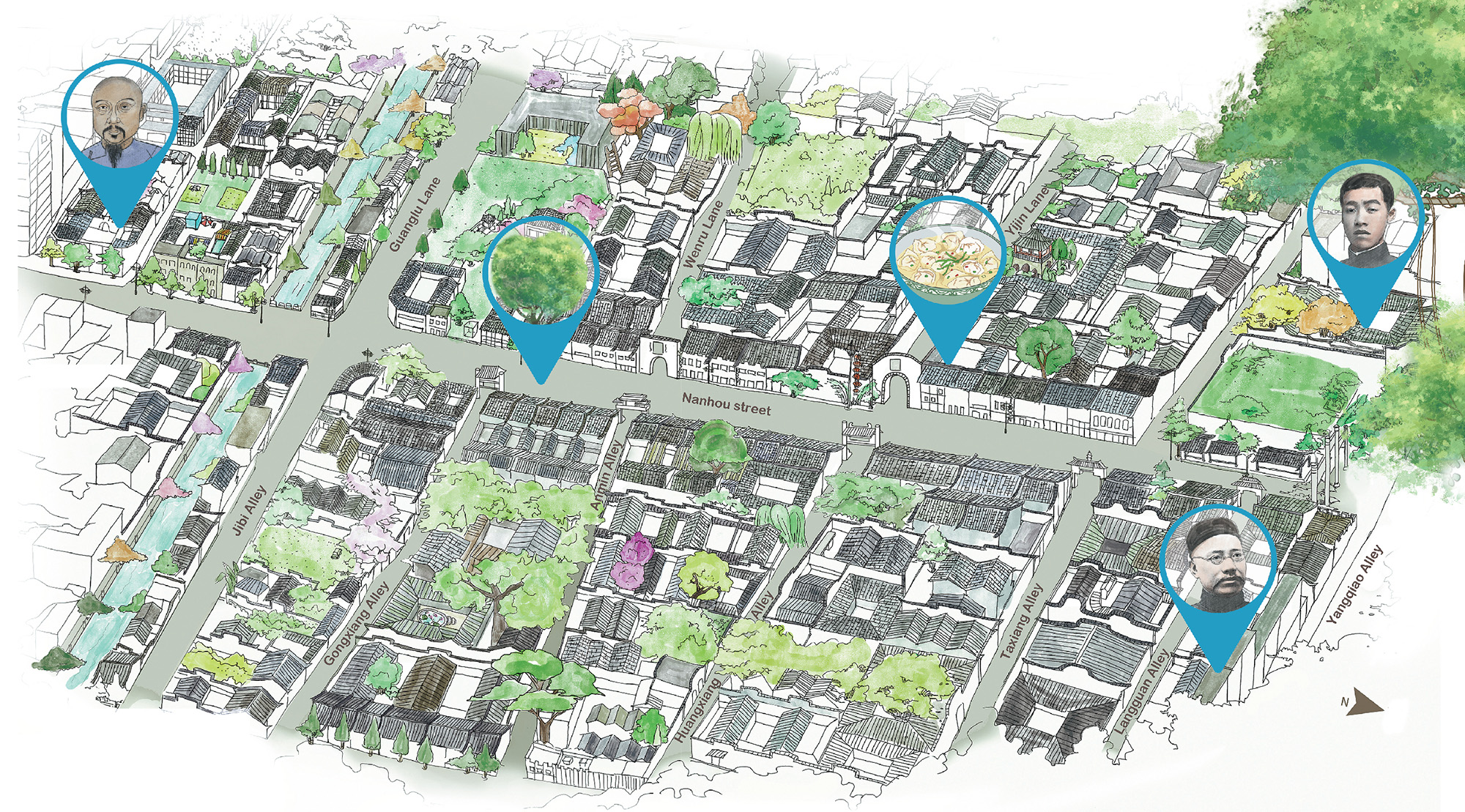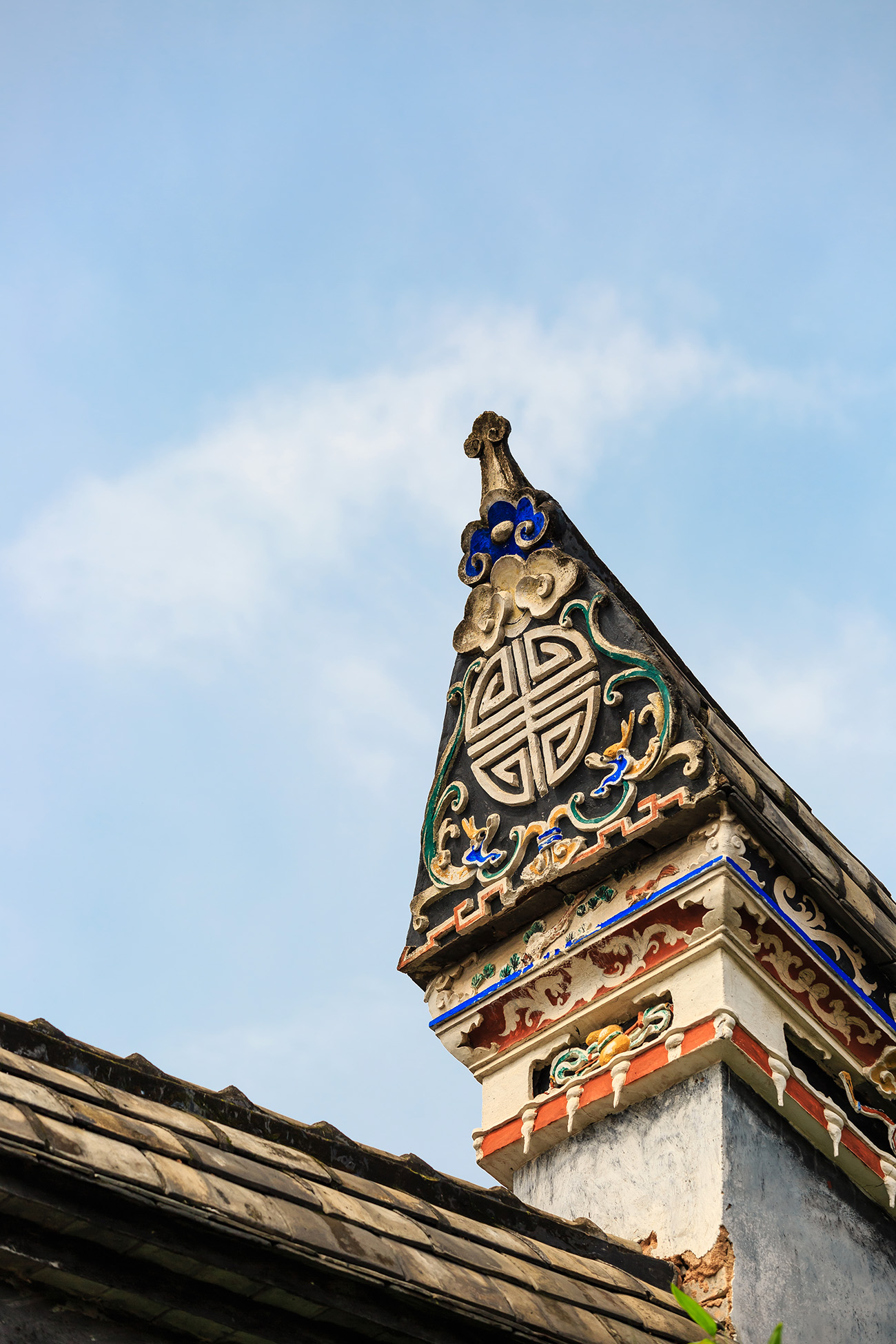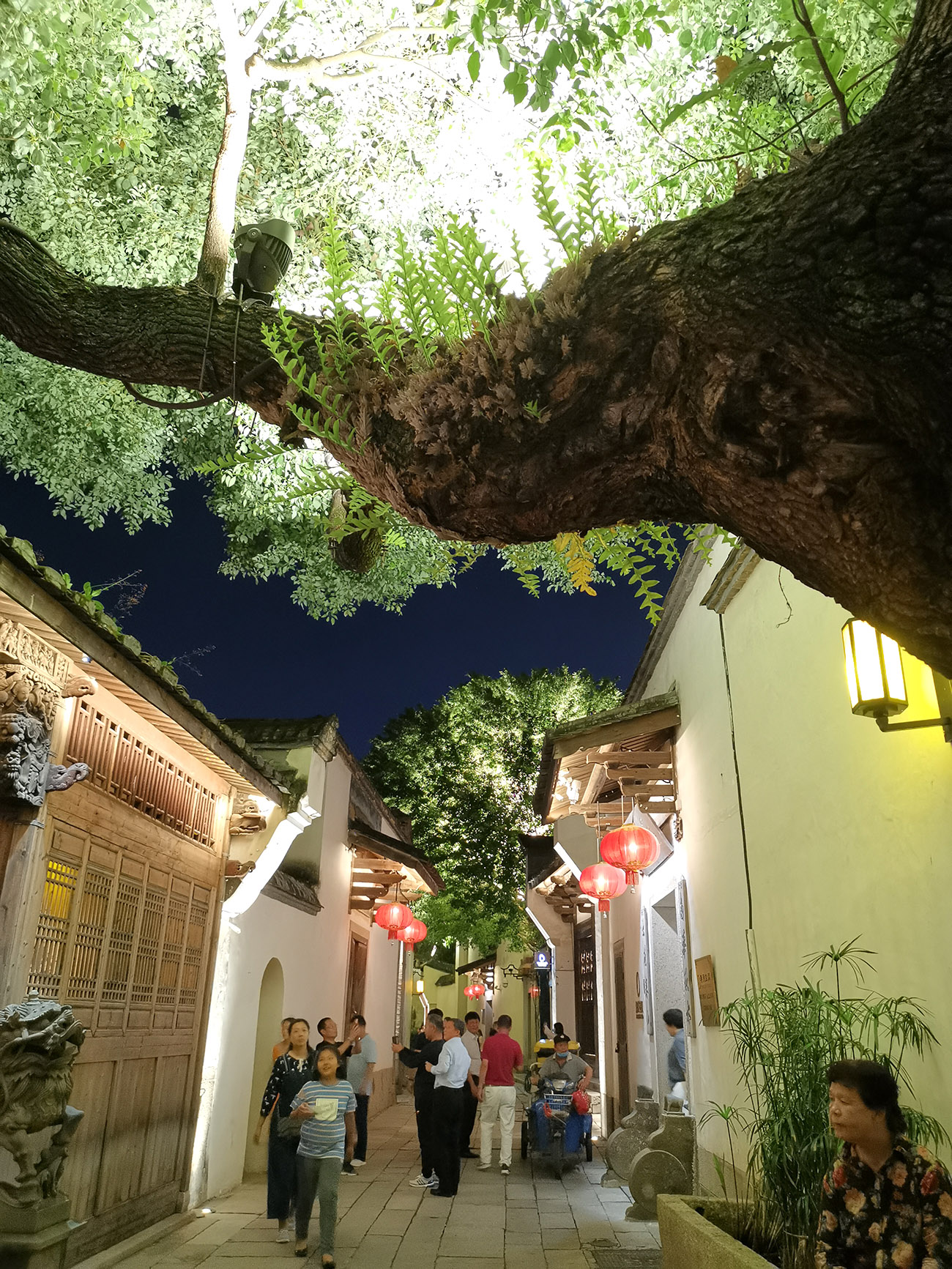Restoration of historical Fujian neighborhood bolsters pride and preserves tradition, with a contemporary twist, Yang Feiyue and Hu Meidong report in Fuzhou.

Editor's note: A number of Chinese cities have maintained their cultural memory in the form of historical neighborhoods that have only added to their multilayered charm and vigor with the passage of time. China Daily is taking readers on a journey to some of these timeless areas, where President Xi Jinping has left his footsteps and remarked on the preservation and vitalization of heritage. In this installment, we wander about the Sanfang Qixiang neighborhood in downtown Fuzhou, sheltered by luxuriant banyan trees and immersed in a cultural atmosphere that helped nurture the course of modern China.
The densely packed, historical buildings, with their mottled white walls and green moss on their black tiles, red lanterns hanging from their eaves and swaying in the wind, have a way of luring visitors into a sense of anachronism at Sanfang Qixiang.
The historical neighborhood's 200-odd ancient buildings, with their Ming (1368-1644) and Qing (1644-1911) dynasty elements, fan out like a fishbone, creating mazelike lanes and alleys that constitute the fabric of the 40-hectare complex in downtown Fuzhou, capital of East China's Fujian province.
The area, the name of which translates as "Three Lanes and Seven Alleys", was initially built during the Jin Dynasty (265-420). During the Tang Dynasty (618-907), it became the center of a bustling development, as residents of high social status, ranging from government officials to scholars, settled there, before reaching its peak during the Ming and Qing dynasties.
Before the 1990s, many of the mansions were subdivided into squatter homes. Some were on the verge of being demolished, as local authorities veered toward real estate development.
In 1991, when President Xi Jinping was secretary of the Fuzhou Municipal Committee of the Communist Party of China — the city's top official — he led efforts to protect and renovate the ancient buildings and heritage sites at Sanfang Qixiang.
READ MORE: Fuzhou sets example in preserving past
This kicked off a shift in the development concept for the historical area from demolition to restoration.
After about three decades of protection, the neatly paved slate walkways lined with ancestral houses are studded with towering leafy banyan trees, each delicately pruned.
"There's not a hair out of place and everything is so clean and in order," says Chen Yongjian, who was born in the neighborhood and has lived here for more than seven decades.
About six years ago, he was relocated to a newly restored historical home tucked away in the alleys a few hundred meters from his former house.

It had once been one of the residences of Ming general Zhang Jing, and Chen used to share the home with 20 of his family members.
"It was so overcrowded that even the hallway was populated by two households," Chen says.
"Clutter filled up the public spaces, and the lack of underground sewage systems gave rise to a persistent stink," he adds.
As government preservation efforts kicked in, Chen says he noticed that his neighbors quickly stopped taking liberties and randomly decorating the property, and his home community has since undergone a face-lift.
His new home has a courtyard that separates his room from an anterior roofed space selling assorted trinkets, like necklaces and bracelets.
"I enjoy the serenity of the spacious room inside, while also being exposed to the vibes of the modern world across my threshold," Chen says.
Yan Longhua, a professor from the Fujian University of Technology, has been in charge of the historical area's protection and restoration since 2007.
"Our conservation efforts have been progressing. Throughout the process, we have been continuously examining the cultural and architectural landscape of Sanfang Qixiang and clarifying its characteristics and values," Yan says.
For example, one key element, the ma'anqiang, the distinctive saddle-shaped wall typical of historical buildings found in Fujian, has been retained and is widely used in the design of Sanfang Qixiang's buildings.
Adorned with clay sculptures and paintings, the wall gently slopes up symmetrically on either side of a central "pommel", with its protruding upturned corners extending slightly outward, a bit like the eaves of a roof.
More details were added after Yan and his team studied the characteristics of Sanfang Qixiang in historical documents, and selected typical elements to integrate into the design of the ma'anqiang.
For example, the rolling mountain landscape and marine elements of Fuzhou are presented in the form of wavelike lines.
"Now, when looking at Sanfang Qixiang from above, the extending roofs spread out, making for a spectacular scene," Yan says, adding that this view alone might set the area apart from its counterparts across the country.
Yan has a workshop set up in an architectural museum hidden in one of the neighborhood's lanes, and says that most of the buildings had suffered from damage.

A holistic and dynamic sustainable protection and restoration plan has since been implemented, aiming to develop Sanfang Qixiang into a showcase of Ming and Qing architecture, as well as of its significance to modern Chinese history, as some 400 people who deeply influenced the course of the country's early modernization lived there, he explains.
"A special emphasis has been placed on preserving the integrity of the neighborhood's layout and overall appearance, as well as the continuity of life. It highlights the close connection between the neighborhood and the daily life of the contemporary city, making it like an open history book within the urban landscape," Yan says.
In addition to keeping a number of original residents and their living environment intact, some of the public spaces have been arranged to satisfy the needs of modern visitors.
As such, Nanhou Street, the area's central artery, has now turned into a commercial entity.
"As for business layout, Nanhou Street can be lively, but once you enter the lanes, the commercial atmosphere doesn't need to continue; instead, it should give way to an elegant, humanistic atmosphere," Yan says.
The area's physical protection is essentially complete, and the next stage will mainly be about summarizing past work experience and learning from the good practice of historical preservation in other cities, he adds.
"We will make further efforts in historical exploration … and better preserve the authenticity and completeness of local history to pass it along," Yan says.
With its famous residences restored to their former glory, many hosting exhibitions and interactions with the past, Sanfang Qixiang has evolved into a tourism hot spot.
Visits exceeded the 20 million mark last year, says Zhang Ying, deputy general manager with the company in charge of the protection and development of Sanfang Qixiang.
"Dining establishments are mostly located on the periphery of the area, and serve mainly light meals to protect the historical environment," Zhang says.
"People can read books and enjoy coffee in the cafes in the alleys with their strong cultural and leisurely atmosphere," she adds.
Developed on the premise of not disturbing residents in the neighborhood, themed cultural activities have been arranged for guests to better savor the cultural atmosphere of Sanfang Qixiang.
Chen Junfan, for one, takes his guests on a walk through history from time to time, with demonstrations of traditional rouyan preparation at his shop on Nanhou Street.
From pounding the meat and rolling the dough, to the wrapping and cooking techniques, everything Chen Junfan does is just like it was done back in 1876, when his family first set up a shop selling rouyan in the street.
As one of the most famous local dishes, the wonton-like specialty is made by hand using pork meat from the hind leg and sweet potato flour. The casing is as thin as paper, soft and elastic. The filling is made of minced fish, pork and shrimp, all seasoned based on a time-honored recipe, for a refreshing taste.
As well as tasting the specialty, tourists can also try their hand at making it, by signing up for learning tours arranged by Chen Junfan. He is a fourth-generation inheritor of the family rouyan tradition, which was named a provincial intangible cultural heritage by Fujian in 2007.
"We only had a few tables in an area of no more than 20 square meters in the 1980s, and people would only buy them for holidays and celebrations," Chen Junfan says.
Now his shop covers a much bigger area and visitors make their presence felt throughout the day.
The rising status of Sanfang Qixiang as a destination has injected a sense of pride in Chen Yongjian, leading him to volunteer as a tour guide for more than a decade.
ALSO READ: White dolphins protected off coast of Xiamen
"They have brought vitality to my home and I want to do my part to help it remain prosperous," Chen Yongjian says.
He has made a point of studying Sanfang Qixiang's history and keeps abreast of the exhibitions about historical figures that are held at their former residences.
Although he has had to reduce the number of tours he gives because of his dwindling physical strength, Chen Yongjian, in his 70s, says that he is not planning to give up the job, especially after President Xi visited the neighborhood during an inspection trip to Fujian in March 2021.
He says he has drawn strength from Xi's instructions about properly protecting ancient neighborhoods, buildings and cultural relics to preserve the history and cultural traditions of a city, and how important it is to value and respect old buildings and neighborhoods.
"I feel fortunate to be part of the neighborhood, thanks to my ancestors who chose to settle here," Chen Yongjian says.
"I grew up listening to the stories of historical figures and I feel it a privilege to share my love for my hometown with people from far and wide."
Yang Jie contributed to this story.
Contact the writers at yangfeiyue@chinadaily.com.cn


